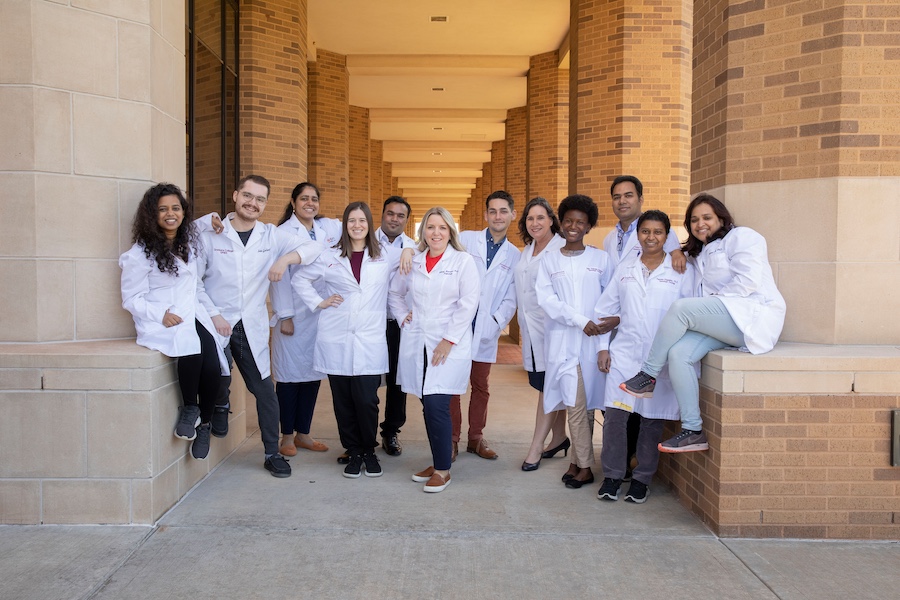Andrew Berchuck, MD, is the Director of Gynecologic Cancer Research, and Professor of Gynecologic Oncology in the Department of Obstetrics and Gynecology at Duke Comprehensive Cancer Center. In this interview, Dr. Berchuck discusses the role of genetics in ovarian cancer. This is the first in a series of interviews conducted by OCRF’s Chief Executive Officer, Elizabeth Howard.
Elizabeth Howard: Dr. Berchuck, there is still no method of early detection for ovarian cancer. However, is it possible to determine if one is at risk based on genetics?
Dr. Andrew Berchuck: Genetics definitely plays a role in determining a woman’s risk of developing ovarian cancer. Our best estimate is that about 25% of ovarian cancers occur in individuals who have inherited a predisposition to the disease. About half of these cases are related to the BRCA1 and BRCA2 genes, which also strongly increase breast cancer risk. The risk of ovarian cancer may be as high as 60% in these women. Because of the high risk of breast and ovarian cancer in mutation carriers, there are usually several people with these cancers in affected families. The cancers also usually occur at a younger age than would otherwise be expected.
EH: What can be done to prevent ovarian cancer in women with BRCA1 or BRCA2 mutations?
AB: In families with a history of early onset breast and ovarian cancer suggestive of a BRCA1 or 2 mutation, genetic testing can be performed using a blood sample to identify mutations in these genes. Genetic testing is an essential step in the process of ovarian cancer prevention, and insurance companies and Medicare will generally pay for this testing. If there is a mutation in the family, on average about half of the people would be expected to be carriers. Since we do not have an effective screening test for ovarian cancer, the best approach is to prevent ovarian cancer by surgically removing the fallopian tubes and ovaries of mutation carriers after they have completed their families.
EH: Is there anything other than family history of breast and ovarian cancer that should alert a woman to the possiblity that they may carry a BRCA1 or BRCA2 mutation?
AB: Although these genes account for about 10% of ovarian cancers, mutations are uncommon and are carried by less than 1% of the U.S. population. However, higher carrier rates have been noted in certain ethnic groups. One notable example is the Ashkenazi Jewish population, in which about 1 in 40 individuals (2.5%) carry a BRCA1 or 2 mutation. There are three specific mutations in these genes that occur at a high frequency, and these can be tested for more inexpensively as an initial screen.
EH: The research you have been conducting is looking at the role genetics play in ovarian cancer. What are the latest findings?
AB: Although the BRCA1 and 2 genes strongly predispose one to develop ovarian cancer, it is thought that there are also more common genetic factors that increase risk moderately. These would not be expected to cause striking clustering of ovarian cancer in families. Identification of moderate risk ovarian cancer genes is accomplished through studies that compare thousands of women with ovarian cancer to women without the disease. With funding from OCRF, I am leading an international group of about 20 such studies that are working together collaboratively. The goal of the Ovarian Cancer Association Consortium is to identify genetic variants, known as polymorphisms, which subtly affect ovarian cancer risk. We envision a future in which reduction of ovarian cancer incidence and mortality will be accomplished by implementation of screening and prevention approaches in women who are at moderately increased risk based on both genetic polymorphisms as well as known risk factors such as number of pregnancies, birth control pill use, and tubal ligation. Given the relative rarity of ovarian cancer, this focused approach to prevention, which targets women who are at moderately increased risk, is more feasible than an approach which focuses on screening all women.
To learn more about Dr. Andrew Berchuck and his research, click here.


